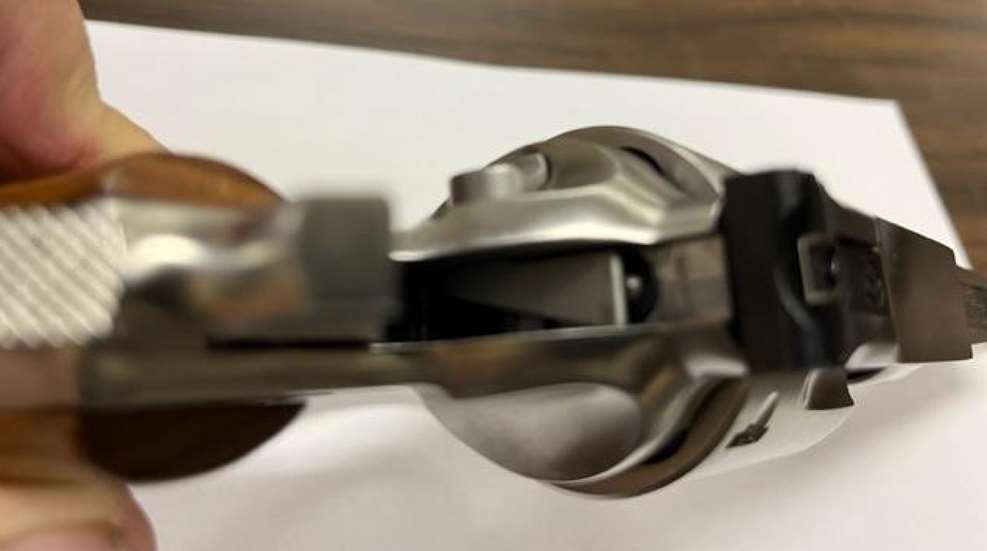
There is a defining distinction between those of us “in our prime,” and younger generations. No, it is not all of the electronics and technology, the “new” math that we parents cannot do, or even the virtual world. That is because even the eldest of the older generation can learn these things. What separates us from the younger generation are black-and-white TV cowboy shows!
It is a travesty that the younger generations did not grow up in the world of Gene Autry, Audie Murphy, Hop-Along-Cassidy and even John Wayne in his early days, just to name a few. We always knew that our heroes would ride in and save the day. They would show up in the nick of time, blasting away with their trusty old “six-shooters” while taking out all the bad guys. They would clear the area of road agents, return the town’s money to the bank, and last but not least, ride off with the pretty girl!

One thing about those old shows is that our heroes, as well as the bad guys, seemed to have an endless supply of ammunition in their six-shooters! I remember watching those shows with my dad and asking, “Did cowboys ever have to reload?” My dad always told me, “No, those are magic Hollywood guns.”
In reality, cowboys, lawmen and pioneer women only carried five rounds of ammunition in the cylinders of their six-shooters, unless they were “itching for a fight!” This is because the hammer of an early revolver, single-action or double-action, could discharge if dropped, when riding through heavy brush, or from anything else that could cause the hammer to drop and cause the ignition of the primer in a cartridge.

Accidental discharges were common with early revolvers because the firing pin was integrated into the hammer. If anything had an impact on the hammer, such as the ground, a sharp hit on the hammer spur, or the trigger being slightly pulled to the rear and then released, would cause the firing pin to strike the primer of the cartridge, potentially starting the firing sequence.
The solution to this was the Transfer Bar. The transfer bar will allow the firing pin to strike the primer of a cartridge only when the trigger is pulled. The transfer bar is a piece of metal that transfers the energy from the hammer to the firing pin, thus starting the firing sequence. To do this, the firing pin had to first be separated from the hammer. If you see a picture of an early revolver, you will notice that the face of the hammer had a point. This was the firing pin. On most modern revolvers, the firing pin was moved internally in the end of the frame of the revolver. On these modern revolvers, the face of the hammer is flat. When at rest or cocked, the transfer bar is not between the hammer and the firing pin. Only when the trigger is pulled does the transfer bar move to the correct position to transfer energy.
If you have a modern revolver that has the transfer bar safety system, you can see the external components. First, make sure your revolver is unloaded. Second, check your revolver again to make sure it is unloaded. When you cock the hammer to the rear, you will see the flat face of the hammer, the round rear of the firing pin, and the rectangle shaped transfer bar sitting beneath the level of the other two components. When you slowly cock the hammer, you can see the transfer bar moving up and down. In the fully cocked position, the transfer bar will be at the furthest downward position. When the hammer is pulled, the transfer bar will rise to is furthest upward position. The energy released from pulling the trigger sends the transfer bar into the position so fast you cannot see it when it locks into place to fire the revolver.

There have been several types of transfer bar systems introduced since the concept was developed around 1908. The Iver Johnson firearms company is probably the best known because of their advertisements. Their ad campaign featured the “Hammer the Hammer” safety system. Their ads included young girls in bed or in their bedroom with bows in their hair, teddy bears and a doll playing with their daddy’s gun!
The transfer bar safety system that we see today on modern revolvers produced is the descendant of the type introduced by Charter Arms in the 1960s. The Charter Arms company introduced the Undercover model chambered in .38 Special. Ruger followed suit by introducing the system in its Security Six model. Most of today’s modern firearms have some form of these original transfer-bar systems.
The firearms today are extremely safe, many with redundancy in their safety systems. This is because firearms manufacturers take safety seriously. Hunting and the various shooting sports are some of the safest hobbies and activities around.
It is very important to remember that not all modern revolvers have a transfer-bar safety system. Some modern high-end single-action revolvers such as the Italian-made Uberti and Peitta do not have transfer bars on many of their models. During the 1960s and early 1970s, the movie scene produced a genre of westerns, coined as “Spaghetti Westerns.” These old classics were filmed by Hollywood featuring American actors in the countries of Italy and Spain. The Italian firearms manufacturers of the time bought the rights to produce revolvers for the film industry.
Ubertis, Peittas and other single-action revolvers are still very popular with cowboy shooting aficionados and collectors. Just remember, if you come across a single-action revolver or an older double-action revolver, always inspect it for a transfer bar. If it does not have one, make sure the hammer is rested on an empty cylinder.














































